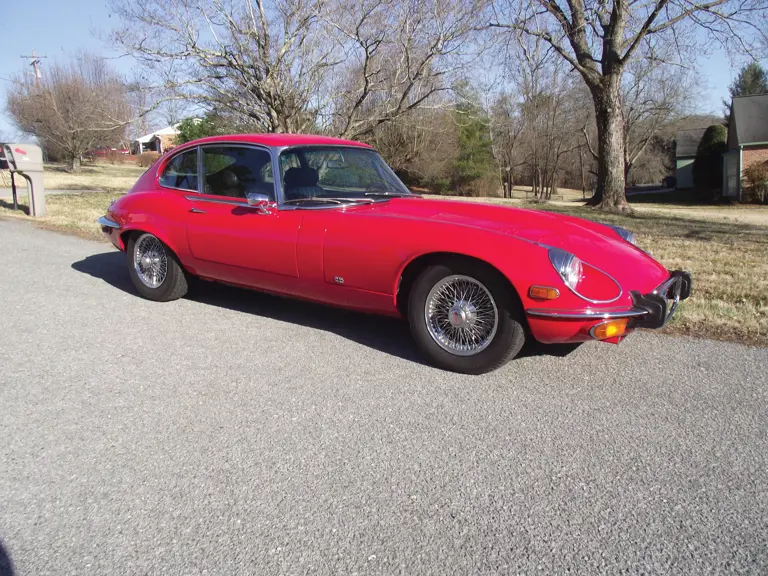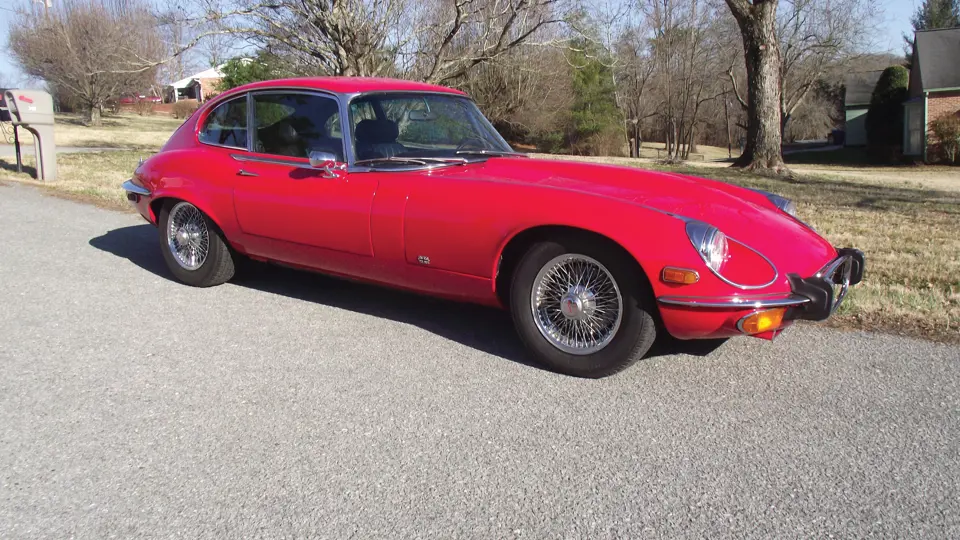When Jaguar introduced the E-Type at the Geneva International Motor Show in March of 1961, the car produced a splash similar to that of the XK 120’s premiere in 1948. Not only had Jaguar produced another breathtakingly gorgeous sports car, they had once again reset the standard for the sports car industry. Enzo Ferrari called the E-Type “the most beautiful car ever made,” and one example lives in the permanent collection of the Museum of Modern Art in New York City, as a testament to the car’s groundbreaking style. Jaguar drove one of their press demonstrators over 600 miles from their factory in Coventry to Geneva, arriving just in time for the car’s unveiling, showing that the E-type’s looks could match its performance.
Released in 1971, the defining characteristic of the Series III E-Type was its brand new 12-cylinder engine. Greatly increasing the available power and torque over earlier straight-six E-Types, the V-12 of the Series III more than compensated for power decreases due to stricter emissions control in the Series II E-Types. Exterior changes consisted of flared wheel arches to fit the new suspension and wider track, along with a cross-slated front grille. Jaguar only produced the Series III E-Type in two styles, the 2+2 coupe and the roadster, dropping the two-seater coupe. In addition, the roadster adopted the longer wheelbase of the 2+2, making for slightly more interior room.
This Jaguar received a high-quality restoration approximately 10 years ago and is finished in Signal Red with a new Black leather interior; this 1973 2+2 coupe sports the desirable and optional chrome wire wheels and air conditioning, which is a welcome option in warmer climates. The strong 5.3-liter, 272-hp DOHC V-12 engine has four Stromberg carburetors and the unit is mated to an automatic transmission. The exhaust is the early four-splitter type, this was later changed in production to the more common two-pipe set-up. The interior features a center console, properly working full instrumentation, radio/CD player and front seat headrests. Additional equipment includes power steering and four-wheel disc brakes. New tires have been fit, plus door-mounted dual mirrors and a chrome air extractor grille on the rear hatch help to distinguish this Series III, one of only 7,310 produced.



 | Auburn, Indiana
| Auburn, Indiana


